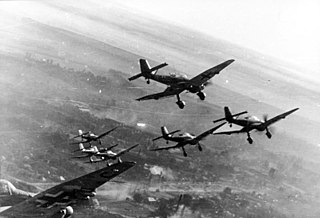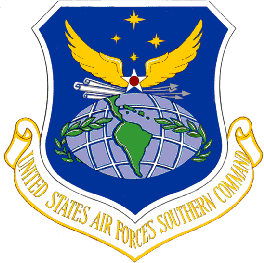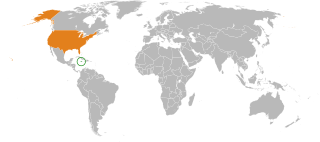Related Research Articles

The Quasi-War was an undeclared naval war fought from 1798 to 1800 between the United States and the French First Republic, primarily in the Caribbean and off the East Coast of the United States.

World War II or the Second World War was a global conflict that lasted from 1939 to 1945. The vast majority of the world's countries, including all the great powers, fought as part of two opposing military alliances: the Allies and the Axis. Many participating countries invested all available economic, industrial, and scientific capabilities into this total war, blurring the distinction between civilian and military resources. Aircraft played a major role, enabling the strategic bombing of population centres and delivery of the only two nuclear weapons ever used in war. It was by far the deadliest conflict in history, resulting in 70–85 million fatalities.

Operation Torch was an Allied invasion of French North Africa during the Second World War. Torch was a compromise operation that met the British objective of securing victory in North Africa while allowing American armed forces the opportunity to engage in the fight against Nazi Germany and Fascist Italy on a limited scale. It was the first mass involvement of US troops in the European–North African Theatre, and saw the first major airborne assault carried out by the United States.

The United States occupation of Haiti began on July 28, 1915, when 330 U.S. Marines landed at Port-au-Prince, Haiti, after the National City Bank of New York convinced the President of the United States, Woodrow Wilson, to take control of Haiti's political and financial interests. The July 1915 invasion took place following years of socioeconomic instability within Haiti that culminated with the lynching of President of Haiti Vilbrun Guillaume Sam by a mob angered by his decision to order the executions of political prisoners. The invasion and subsequent occupation was promoted by growing American business interests in Haiti, especially the National City Bank of New York, which had withheld funds from Haiti and paid rebels to destabilize the nation through the Bank of the Republic of Haiti with an aim at inducing American intervention.
The Havana Conference was a conference held in the Cuban capital, Havana, from July 21 to July 30, 1940. At the meeting by the Ministers of Foreign Affairs of the United States, Panama, Mexico, Ecuador, Cuba, Costa Rica, Peru, Paraguay, Uruguay, Honduras, Chile, Colombia, Venezuela, Argentina, Guatemala, Nicaragua, Dominican Republic, Brazil, Bolivia, Haiti and El Salvador agreed to collectively govern territories of nations that were taken over by the Axis powers of World War II and also declared that an attack on any nation in the region would be considered as an attack on all nations.
During the 1920s and 1930s, the United States Armed Forces developed a number of color-coded war plans that outlined potential U.S. strategies for a variety of hypothetical war scenarios. The plans, developed by the Joint Planning Committee, were officially withdrawn in 1939 at the outbreak of World War II in favor of five "Rainbow" plans developed to meet the threat of a two-ocean war against multiple enemies.

The Convention of 1800, also known as the Treaty of Mortefontaine, was signed on September 30, 1800, by the United States and France. The difference in name was due to Congressional sensitivity at entering into treaties, due to disputes over the 1778 treaties of Alliance and Commerce between France and the U.S.

Almost every country in the world participated in World War II. Most were neutral at the beginning, but only a relative few nations remained neutral to the end. The Second World War pitted two alliances against each other, the Axis powers and the Allied powers; the Soviet Union mobilised 34 million men and women, Germany 18 million, the U.S 16 million, Japan 9 million, and Great Britain 6 million. It is estimated that in total, 126 million people were mobilised during the war. It is generally estimated that a total of 72 million people died, with the lowest estimate being 40 million dead and the highest estimate being 90 million dead. The leading Axis powers were Nazi Germany, the Empire of Japan and the Kingdom of Italy; while the British Empire, the United States, the Soviet Union and the Republic of China were the "Big Four" Allied powers.

The Allies, formally referred to as the United Nations from 1942, were an international military coalition formed during World War II (1939–1945) to oppose the Axis powers, led by Nazi Germany, the Empire of Japan, and the Kingdom of Italy. Its principal members by the end of 1941 were the "Big Four" - United Kingdom, United States, Soviet Union, and China.
The Fleet Problems are a series of naval exercises of the United States Navy conducted in the interwar period, and later resurrected by Pacific Fleet around 2014.

SS Vaterland was a transatlantic ocean liner that was launched for the Hamburg America Line in 1940 but left incomplete because of the Second World War. An Allied air raid damaged her in 1943, and she was scrapped in 1948.

The United States Air Forces Southern Command is an inactive Major Command of the United States Air Force. It was headquartered at Albrook Air Force Base, Canal Zone, being inactivated on 1 January 1976.
Imperial German plans for the invasion of the United States were ordered by staff officers from 1897 to 1903 as training exercises in planning for war. The hypothetical operation was supposed to force the US to bargain from a weak position and to sever its growing economic and political connections in the Pacific Ocean, the Caribbean, and South America so that German influence could increase there. Junior officers made various plans, but none were seriously considered and the project was dropped in 1906.

The United States maintains close and productive relations with Jamaica.

SS Black Osprey was a cargo ship for the American Diamond Lines and the British Cairn Line. She was formerly known as SS West Arrow when she was launched for the United States Shipping Board (USSB) during World War I. The ship was inspected by the United States Navy for possible use as USS West Arrow (ID-2585) but was neither taken into the Navy nor ever commissioned under that name.

France–Americas relations started in the 16th century, soon after the discovery of the New World by Christopher Columbus, and have developed over a period of several centuries.

The history of Cuba during World War II begins in 1939. Because of Cuba's geographical position at the entrance of the Gulf of Mexico, Havana's role as the principal trading port in the West Indies, and the country's natural resources, Cuba was an important participant in the American Theater of World War II, and it was one of the greatest beneficiaries of the United States' Lend-Lease program. Cuba declared war on the Axis powers in December 1941, making it one of the first Latin American countries to enter the conflict. When the war ended in 1945, the Cuban military had developed a reputation of being the most efficient and co-operative Caribbean nation.
The diplomatic history of World War II includes the major foreign policies and interactions inside the opposing coalitions, the Allies of World War II and the Axis powers, between 1939 and 1945.

During World War II, a number of significant economic, political, and military changes took place in Latin America. The war caused considerable panic in the region over economics as large portions of economy of the region depended on the European investment capital, which was shut down. Latin America tried to stay neutral at first but the warring countries were endangering their neutrality. In order to better protect the Panama Canal, combat Axis influence, and optimize the production of goods for the war effort, the United States through Lend-Lease and similar programs greatly expanded its interests in Latin America, resulting in large-scale modernization and a major economic boost for the countries that participated.
References
- ↑ Session: Problems and Exercises, Blue and Orange Series, Blue and Black Series, 1914-1915. Instructional Records, compiled 1921 - 1940, documenting the period 1864 - 1940. War Department. Retrieved 2011-11-29.